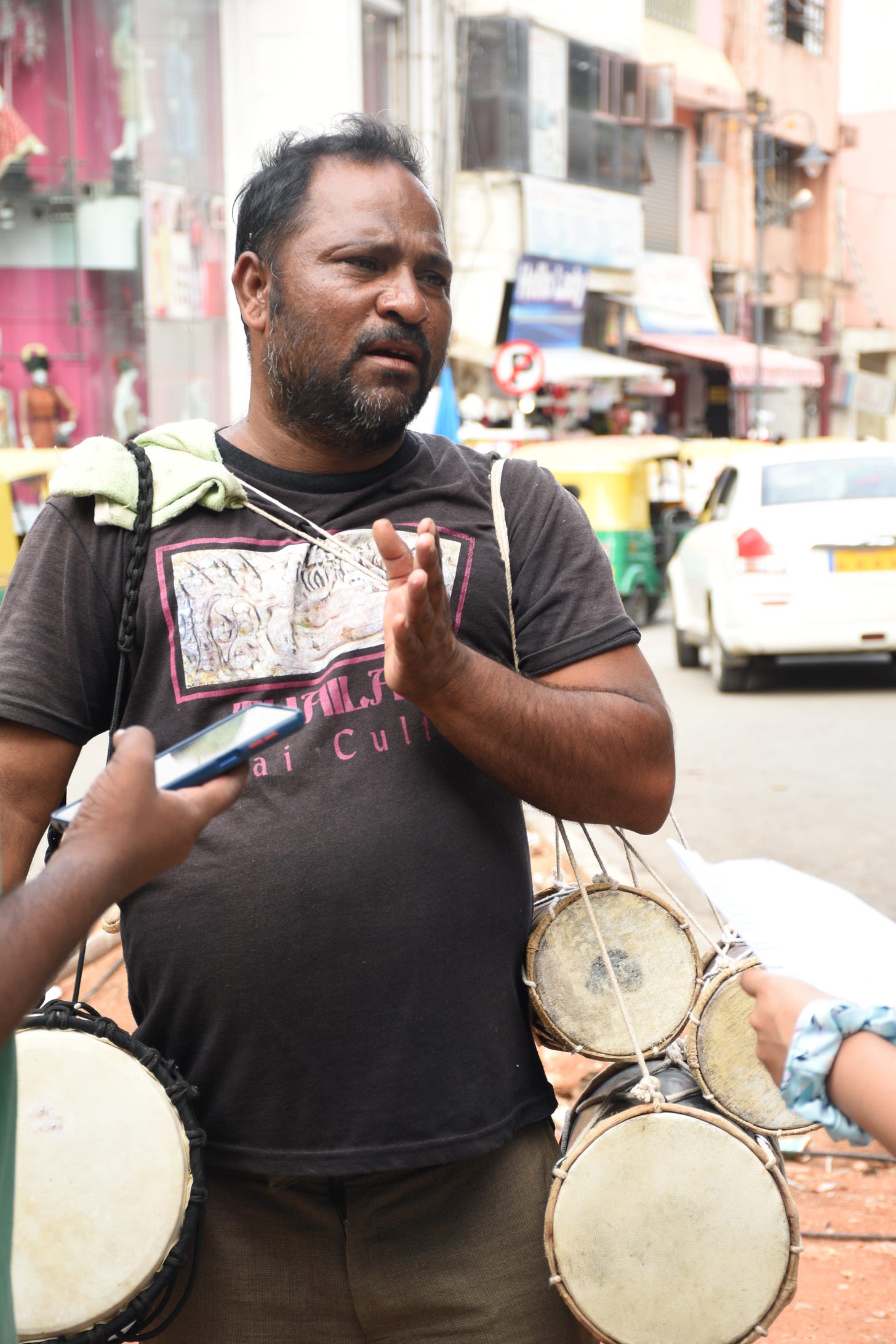Dear Readers,
The Indian folk Culture introduces us to a variety of drums; a combination of wood, metal, animal skin and cloth. People inherit these skills from their forefathers, whether it be the beating or making of these instruments(whose evolution has always been intriguing to us). But is their present outlook all good, are these skills secured and protected?
MOONSCAPES
Dhol is a term commonly used for double-headed drums in India. Historically, we find the description of a persian drum ‘Duhul’ in the Orchestra of Mughal Emperor Akbar, in ‘Ain-e-Akbari’ by Abul Fazl(16th century). The Indo-Aryan adoption of Dhol is described in Sangitsara(18th century).
According to the discussion with Dr. D.R. Purohit, a renowned Researcher and Professor of English and Culture of Central Himalayas at HNB Garhwal University, Dehradun, people of the Tamta Community made the shell of the Dhol with copper and brass. They used traditional method of measurements which were also scientific and produced instruments with desired frequencies. They also added ‘Vijaysar’, a strip in the middle of the drum, as a representation of the serpent.
There were several other people with technical skills(like the correct angle at the centre ring of the shell of dhol) involved in the process, known as ‘Dholis’. And ‘Ouji’ were the people in Garhwal, who used to put Pood or animal skin on the dhol and and tie it with ropes.
According to Bihari Lal ji, who belongs to the Ouji Community, and resides in Naurakh village of Chamoli dist. of Uttarakhand, the choice of animal skin for this construction is made with pitch in mind. One of the sides to produce a high pitch is made with female goat skin while the other with comparatively lower pitch is made with male goat skin, which is further applied with a paste of Cow ghee+ Burnt husk/Burnt grass(Baan or Baablu)+ haldi to make the pitch even lower. ‘Atanu’ is the band which hangs around the neck of the dhol-bearers, while beating it with the stick called ‘Lakur’. The faces of the dhol are tied with the rope 12 times around, named as ‘12 Vyanjan’, which produces ‘36 prakar ki taal’.
MOONSHOTS
I met Raees ji during our interaction with vendors selling on the Commercial street of Bangalore. He has been doing this work for 25 years now for 11-12 hrs a day, without any support of the policymakers. Thus entrapped in the vicious cycle of poverty. He along with 40 more families in the same occupation for their daily bread, dwells in temporary settlements in very bad living conditions. They have come here from cities like Lucknow and Barabanki. They travel to different places according to the market and gatherings, many a times due to festivals. One of the reasons of migrating to Bangalore is the cool weather, as Raees ji admits. Whatever they earn, most part goes to buy raw materials for the next collection of Dhols.
Raees ji told us that this occupation to make and sell dhols was his inheritance. While explaining us the value of different raw materials used in the process, he adds:
Paon hona chahiye, chappal ki kya keemat.
He knows how to use What’s app and Phone-pay, he learnt using this online mode of payment during 2020 lockdown.
What he desires is a small shop of his own or even a fix place where he can sit and sell his stuff, probably with the deserved respect. Replying to our statements of of hope, he says:
Jitni koshish hai kar daalo, milna hai jitna utna hi milega.
Must be true. But who decides this: how much one will get?
This is me for now.
Punam.





You raised the voice of unheard - Ouji or Auji remain neglected in Uttarakhand Himalaya. Most recently -Sanskriti Mantri - Minister of Culture organised a big festival for Dholwadak or Ouji/Auji of Uttarakhand in a Ashram located at Haridwar - headed by Padam Shree Pritam Bhartwaan - also known as - Jaagar Samrat of Uttarakhand this was a good initiative. More research will be appreciated as study of - Dhol Saagar and few more references . On the other hand Without Auji or Ouji Nanda Ashtami, Jaagar , Marriage - Pandav Nrtitya, Bagdwaal Nritya , Chakravyuh, Gwareel, Bhoot pooja, Naamkaran, Sakranti pooja are incomplete or can not be organised in Uttarakhand Himalaya. , This is a very informative article - best wishes .Keep it up.
These women and men of street have an extraordinary talent and just need better discovery and monetisation. Perhaps, the new initiatives of Digital Transformation would help them get recognition and worth.
Very insightful. Keep it up.